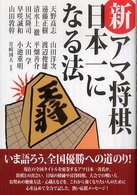- ホーム
- > 洋書
- > 英文書
- > History / World
Full Description
This volume is a revised version of a doctoral dissertation undertaken
at The University of Sydney. It examines the florescene of urban society
during the mid to late Third Millennium BCE in the northern Levant,
focusing on the largely unexplored region of the upper Orontes Valley,
specifically the site of Tell Nebi Mend, ancient Qadesh (on the
Orontes). This work seeks to explore the role and significance of
'small' regional sites during the Early Bronze Age IV, by presenting a
detailed stratigraphic and ceramic analysis of the Tell Nebi Mend
sequence from the mid Third Millennium (Early Bronze Age III) through
the early Second Millennium BCE (Middle Bronze Age I). One of the
principal aims of this work is to construct a detailed ceramic typology
for Tell Nebi Mend and the upper Orontes during the late Third
Millennium BCE. This stratigraphically anchored assemblage was designed
as a foil for the more intensively investigated 'mega-site' sequences of
the region, such as Ebla and Hama. It was also designed to explore and
examine the development and evolution of regional ceramic horizons and
the growth of inter-site interaction that occurred during the later
Early Bronze Age. Although this work will not be the last word on
studies of the EB IV, the ceramic and stratigraphic information
presented sheds new and important light on many of the key research
issues that surround the Early Bronze Age IV, such as the nature of the
Early Bronze Age III-IV transition and the regional response to the
'collapse' of the Early Bronze Age urban system ca. 2000 BCE.








